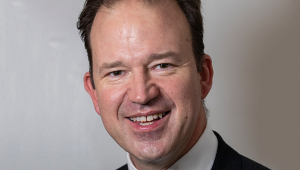In a world of instant messaging, online shopping, and Amazon’s Alexa, interacting with government can seem behind the times.
The Government’s Transformation Strategy, published a year ago on Friday, aimed to change this by making government easier to interact with – promoting intuitive websites, single portals to log-in to services and even information shared through text.
This was billed as a “total transformation of government”.
Ben Gummer, then Cabinet minister, who launched the strategy, described it as “the most ambitious programme of change of any government anywhere in the world”.
So where has it got to? A year on, some progress has been made.
Single websites that help citizens organise complex tasks, like getting a driving licence, have made life easier for many.
GOV.UK Notify automatically keeps people updated as to the progress of passports applications and reminds drivers when MOTs are due.
GOV.UK Pay provides citizens with an easy, secure way to pay for government services.
The workforce is also being shaped to deliver change. As Mr Gummer argued, government will not be able to change its shopfront with a nineteenth-century back office.
Civil servants’ skills are being developed through Government Digital Service’s Digital Academy.
Its move from the Department for Work and Pensions to GDS in May sensibly positioned the body to provide cross-government support for upskilling the workforce.
Individual departments are showing initiative. The Ministry of Justice recently procured a service which helps companies develop the digital mindset, skills and behaviours required to navigate the future world of work.
This is good progress after a year, but more needs to be done to reach the dizzy ambitions of total transformation of government.
Shared platforms have exposed the lack of connectivity in government.
In October, only 38% of GOV.UK Verify users could access the right service through their account. The siloes of government are putting breaks on progress.
Shared procurement channels can be used more effectively to achieve this.
Spend through the Digital Marketplace identified by the strategy to exploit private sector expertise fell in 2017 on the previous year.
Though other channels may have been used, Whitehall should ensure that it is making the most of these routes to delivering digital change.
Clearer leadership is also needed.
Since February 2017, three Cabinet ministers have overseen the strategy.
Matthew Hancock as secretary of state for Digital, Culture, Media and Sport has quickly promoted the digital agenda elsewhere.
More of this is needed across government, in the Cabinet Office and at the very top.
A nod to digital government from the prime minister or her chancellor could help boost the agenda.
Stronger leadership must bring with it a clearer data strategy.
Data may not be a ‘silver bullet’ but getting it wrong is costly.
Pockets of good practice can be found.
HMRC is developing a data warehouse to support agile data sharing within the department.
But for all its ambition, the strategy has not yet helped to deliver comprehensive data sharing across Whitehall.
Most notably, its eye-catching promise to bring in a chief data officer has not yet materialised.
If data is, according the John Manzoni, the “life-blood of twenty-first century government”, its clots need to be cleared.
Better data-sharing and digital leadership are key to transforming government. A year on, government is making steps in the right direction.
However, if it to achieve the radical ambitions it rightly sets, 2018 would be the year to pick up the pace.




















